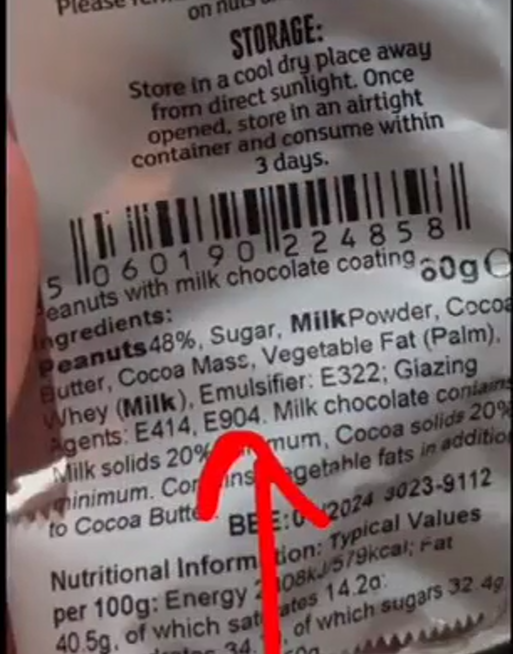Every consumer is responsable for his or her own health, and this includes the food that we decide to give our body. Various research has revealed the full extent of the dangers of additives in our food and beverages which are used to preserve, color, flavor, or texture.
According to a Consumer Association study, unappealing additives in common use include wood chip, chalk, and pigment from dried insect bodies. The foods that were highlighted in this study were Golden Wonder crispy bacon Wheat Crunchies, which contain flavorings and coloring but no bacon; Rowntree’s sugar-free strawberry flavor jelly, which contains no strawberries; and Calypso Freezepops, which contain a slew of flavorings, stabilisers, preservatives, and sweeteners.
Many food labels, according to consumer watchdogs, read’more like a chemistry experiment than something you’d want to eat,’ and they call for much clearer labeling. Amanda Bristow, who compiled the report, stated: “Food additives can be labelled with either their E number, or their chemical name, or both. It is no surprise that most people we asked could not identify all the additives on an ingredients list.”
The British Dietetic Association backed calls for clearer labels. Azmina Govinda, a dietitian, stated, ‘Manufacturers should use simpler language so that people know what they are getting.’
Additives have been linked to skin rashes, asthma attacks, headaches, behaviour problems and even brain tumours. A recent study published online in 2022, titled “Toxicological and Teratogenic Effect of Various Food Additives: An Updated Review,” aimed to “understand how the preservatives induce different health problem in the body once it is consumed.” It mainly focused on additives like so sodium benzoate, aspartame, tartrazine, carrageenan, and potassium benzoate, as well as vitamin A. Part of its abstract reads:
“Scientific evidence is mounting that synthetic chemicals used as food additives may have harmful impacts on health. According to several studies, health issues such as asthma, attention deficit hyperactivity disorder (ADHD), heart difficulties, cancer, obesity, and others are caused by harmful additives and preservatives. Some food additives may interfere with hormones and influences growth and development. It is one of the reasons why so many children are overweight. Children are more likely than adults to be exposed to these types of dietary intakes. Several food additives are used by women during pregnancy and breast feeding that are not fully safe. We must take specific precaution to avoid consuming dangerous compounds before they begin to wreak havoc on our health.”
The study concluded that “Long-term use of food treated with the above-mentioned food preservatives resulted in teratogenicity and other allergens.” Other health issues can be avoided in the future by using natural food additives derived from plants and other natural sources.
Let us have a look at some of these numbered additives.
E441 stands for gelatine, which is made from ground up animal bone and skin. E542 is bone phosphate made from animal bones. E910, E920 and E921 are made from animal hair and feathers, and are additives used in some breads. E901 is beeswax, that is wax made by bees. E966 is a sweetener derived from lactose, which is made from milk. E913 is a greasy substance secreted by sheep and other woolly animals, which can be found both in food and cosmetics. In food, it is used to make Vitamin D3. E170, a calcium carbonate, which is also used in some bread, is taken from the sea and snail shells.
Then we have E445 which is extracted from vegetable matter like pine wood chips. In other words, wood! We have E551, extracted from sand!
Now, there are two more which we should be very careful about. These are E120 and E904.
E120 is another name for carmine, cochineal, carminic acid or natural red 4. What is it? It is crushed up beetles used as red food colouring. This means that it is extracted from the dried bodies of coccid insects. That means, that you are being fed insects.
E904 is another name for shallac, made from the secretions of an insect called the lac bug. It is used as a glazing agent. That means, that you are being fed the excretions of an insect.
Clearly, the Food Industry is in bed with Big Pharma, so that they both keep you in the loop of unhealthy food, sickness, medication.
Hence, it is important that we become conscious of ingredients and read the labels so that we know what we are buying. Or better still, we should go for natural food and healthier options, because at the end of the day, it is a matter of demand and supply. When we stop buying food with unhealthy additives, the demand will decrease and the Food Industry will not provide its supply.

